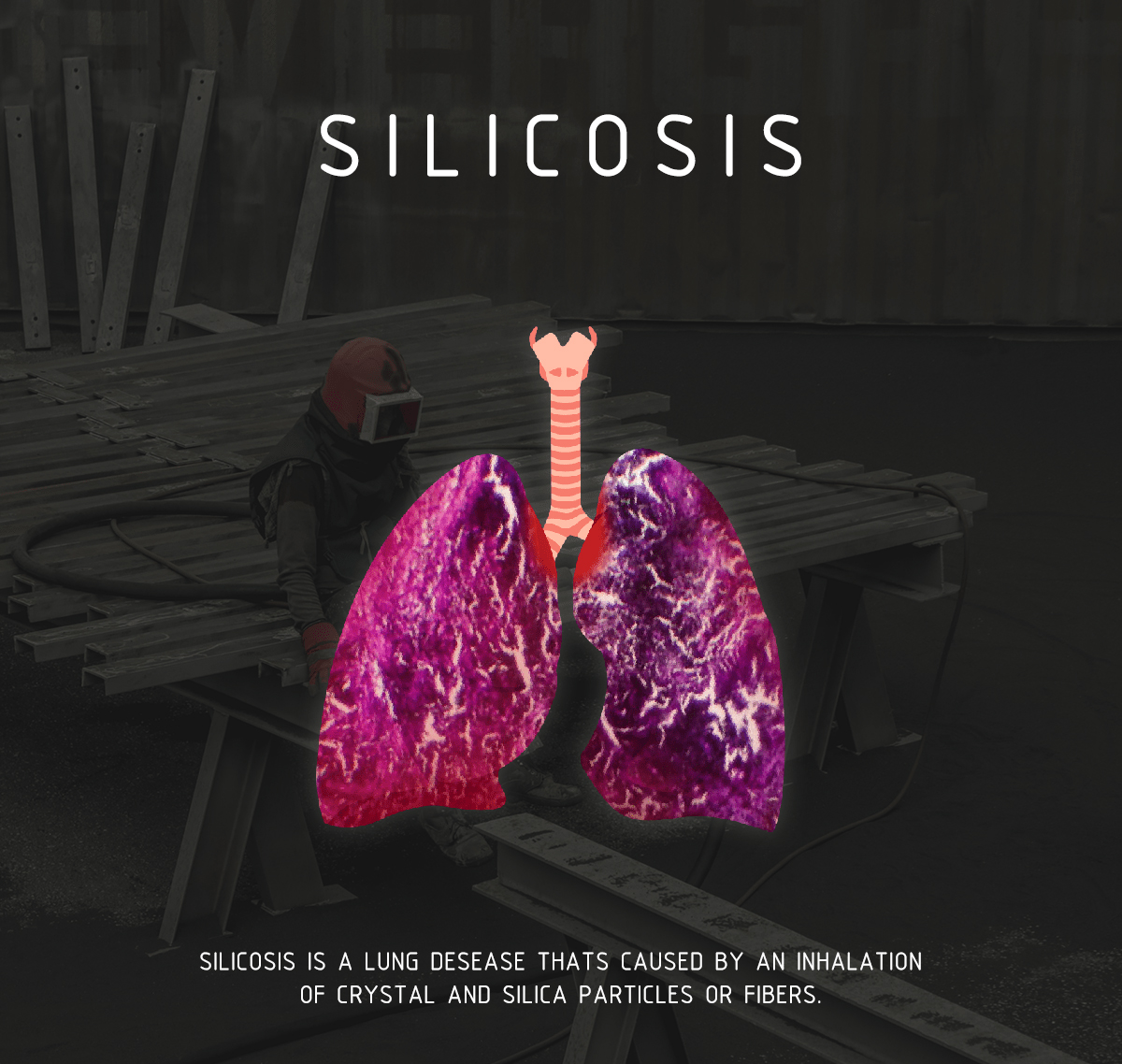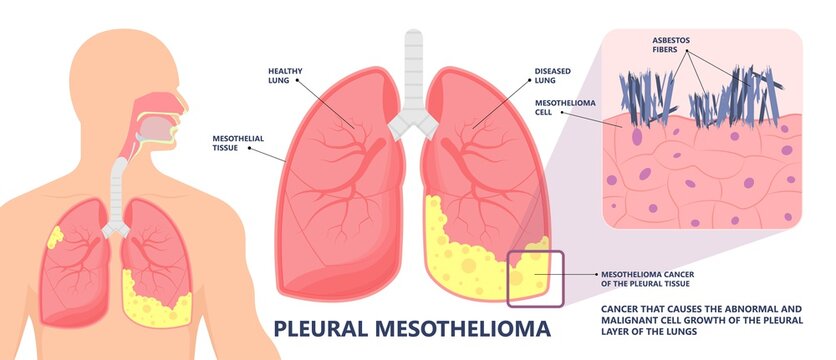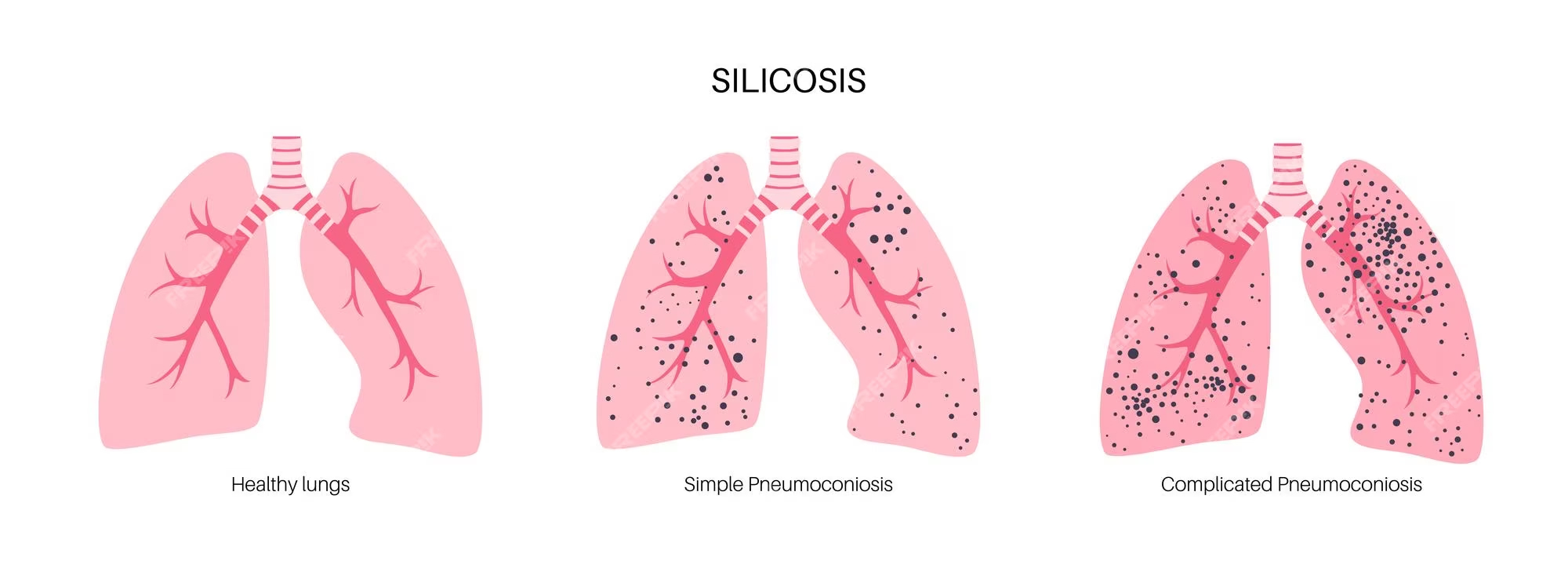
What is silicosis?
Silicosis is a long-term lung disease caused by inhaling unsafe levels of silica dust, usually over a period of many years.
People who work with certain materials may inhale a very fine dust that contains silica. Once inside the lungs, the dust particles can scar the lungs. This scarring is known as silicosis.
Silicosis can lead to breathing problems, a serious lung condition called Progressive Massive Fibrosis (PMF), or lung cancer. There is no cure for silicosis and it can be fatal.
Types of silicosis
The 3 common types of silicosis are:
- chronic silicosis — exposure to silica dust for more than 10 years
- accelerated silicosis — exposure to silica dust for 3 to 10 years
- acute silicosis — develops within weeks or months of exposure to silica dust
All 3 types affect you in the same way. The difference is how long it takes for problems to develop.
What are the symptoms of silicosis?
The main symptoms of silicosis are shortness of breath after exercising, chest pain, a harsh, dry cough and tiredness. But in the early stages of silicosis, there may be no symptoms.
The symptoms become severe as the condition gets worse. Eventually, you might find simple activities such as walking or climbing stairs difficult. You might also have trouble sleeping and eating properly.
Silicosis can also increase the risk of getting other serious conditions such as tuberculosis (TB), chest infections, emphysema, kidney damage and lung cancer.
If you develop the symptoms of silicosis, make an urgent appointment with your doctor if you work, or have worked, with products that create silica dust.

Who is at risk of silicosis?
You are at risk of silicosis if you work with quartz, sand, stone, soil, granite, brick, cement, grout, mortar, bitumen or engineered stone products.
You are at risk of developing silicosis if your work involves:
- making and installing composite (engineered or manufactured) stone countertops
- excavation, earth moving and drilling plant operations
- clay and stone processing machine operations
- paving and surfacing
- mining, quarrying and mineral ore treating processes
- tunnelling
- construction labouring activities
- brick, concrete or stone cutting; especially using dry methods
- abrasive blasting (blasting agent must not contain greater than 1 per cent of crystalline silica)
- foundry casting
- angle grinding, jack hammering and chiselling of concrete or masonry
- hydraulic fracturing of gas and oil wells
- pottery making
Not everyone who works with silica dust develops silicosis. The chances of getting silicosis will depend on many factors, including how much silica dust you come into contact with, and for how long you were exposed to it.
How is silicosis diagnosed?
At the appointment, your doctor will ask you about your symptoms and work history. The doctor will examine you and listen to your lungs with a stethoscope.
Tell the doctor about your exposure to silica dust and whether you were issued with any safety equipment, such as a face mask, when you were working.
The doctor may send you for tests such as:
- a chest x-ray to look for abnormalities in your lungs
- a CT scan of your chest to produce more detailed images of your lungs
- lung function testing (spirometry) to see how well your lungs are working
How is silicosis treated?
Unfortunately, the damage to the lungs cannot be reversed. But treatments such as inhalers and oxygen therapy can improve breathing and your quality of life.
Your doctor might also suggest you stop smoking (if you smoke), have regular tests to check for tuberculosis (TB), and have the annual flu jab.
Can silicosis be prevented?
Silicosis can be prevented by:
- avoiding prolonged exposure to silica dust
- wearing protective masks (but not disposable paper ones)
- wetting down tools and materials to suppress dust
- using tools that have dust-collecting attachments
All workplaces, employers and employees in Australia must comply with their workplace health and safety procedures.
Visit Lung Foundation Australia’s website to learn what you can do to protect your lungs if you’re working with, or are exposed to, silica dust.



